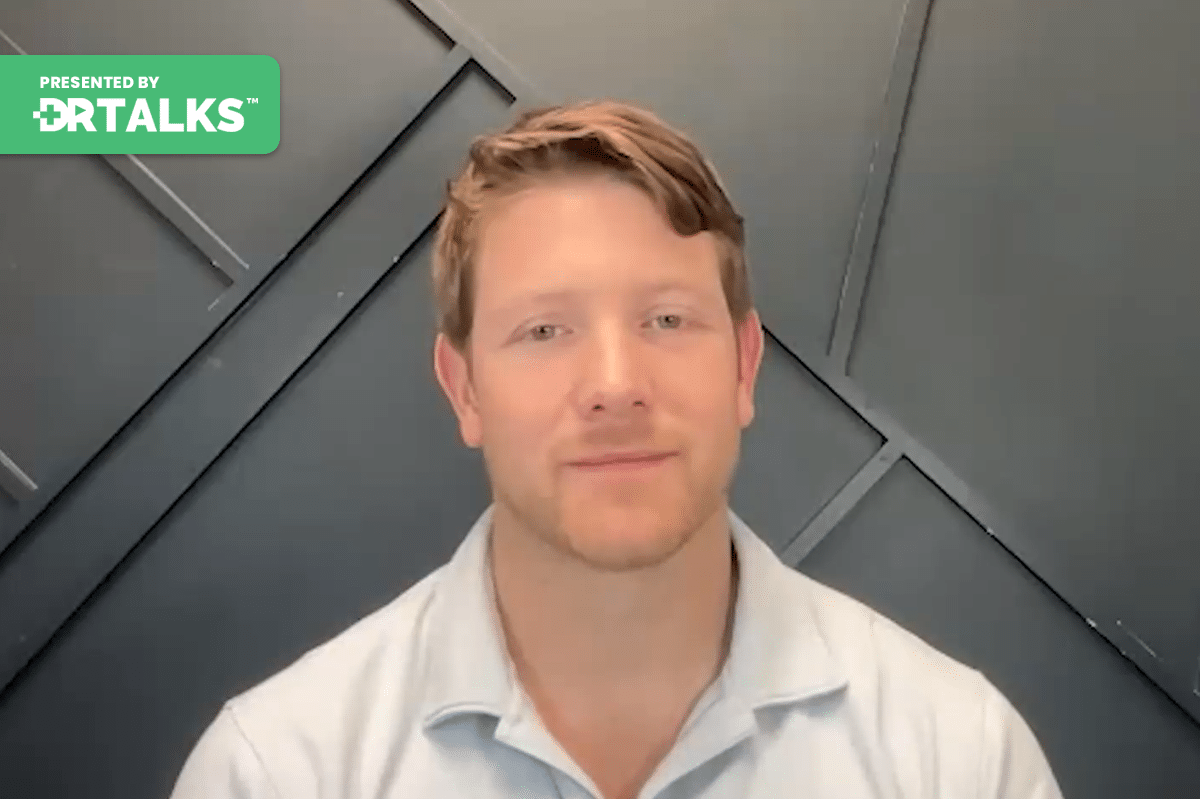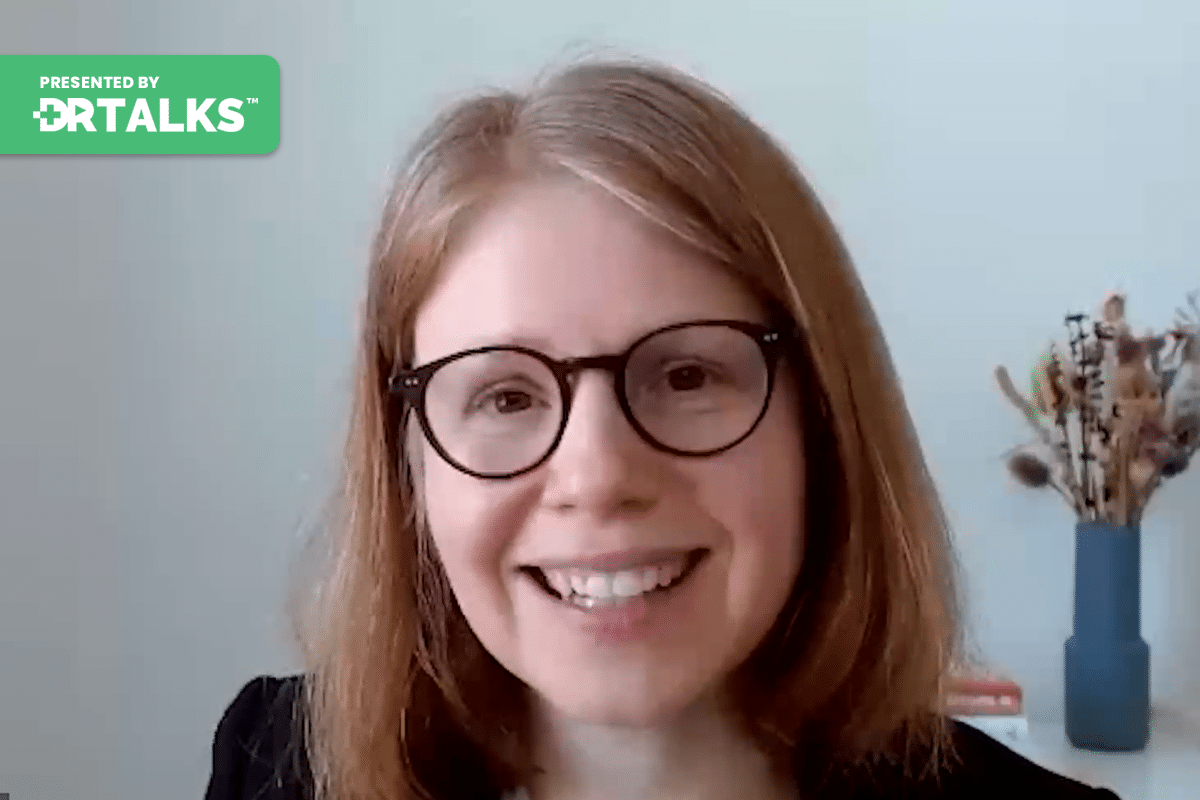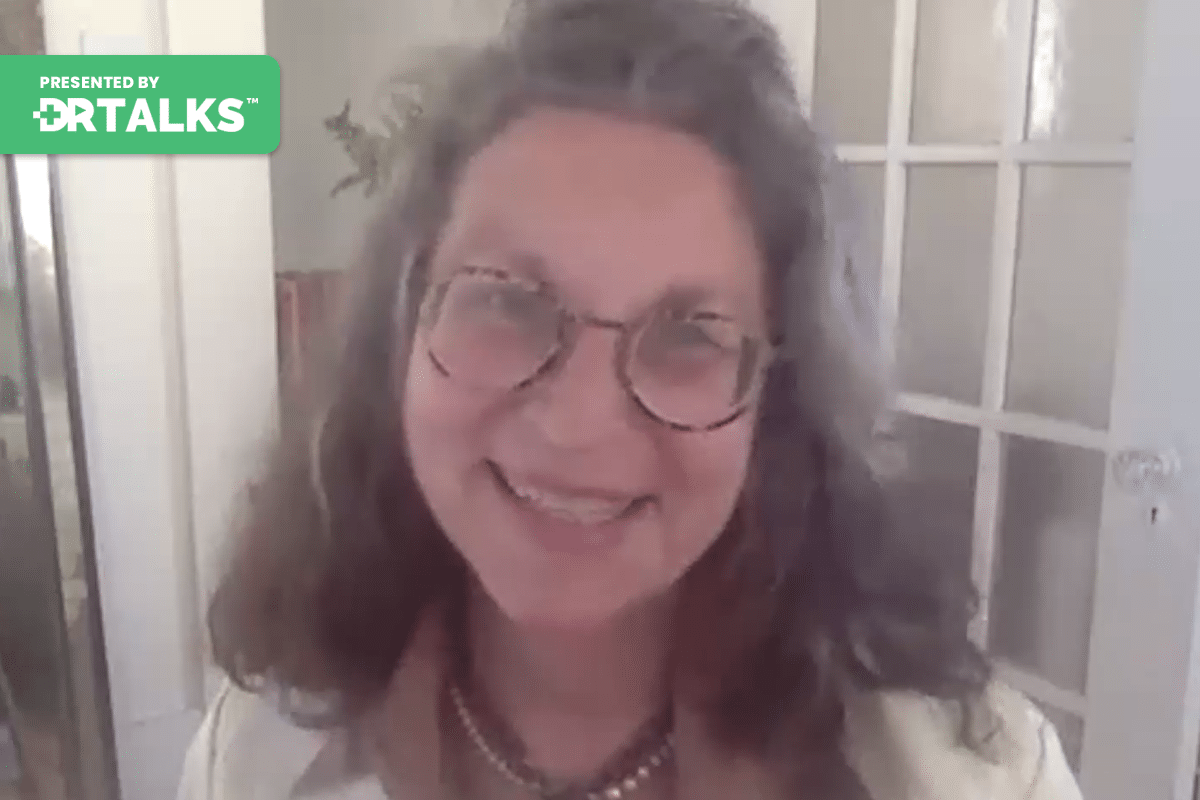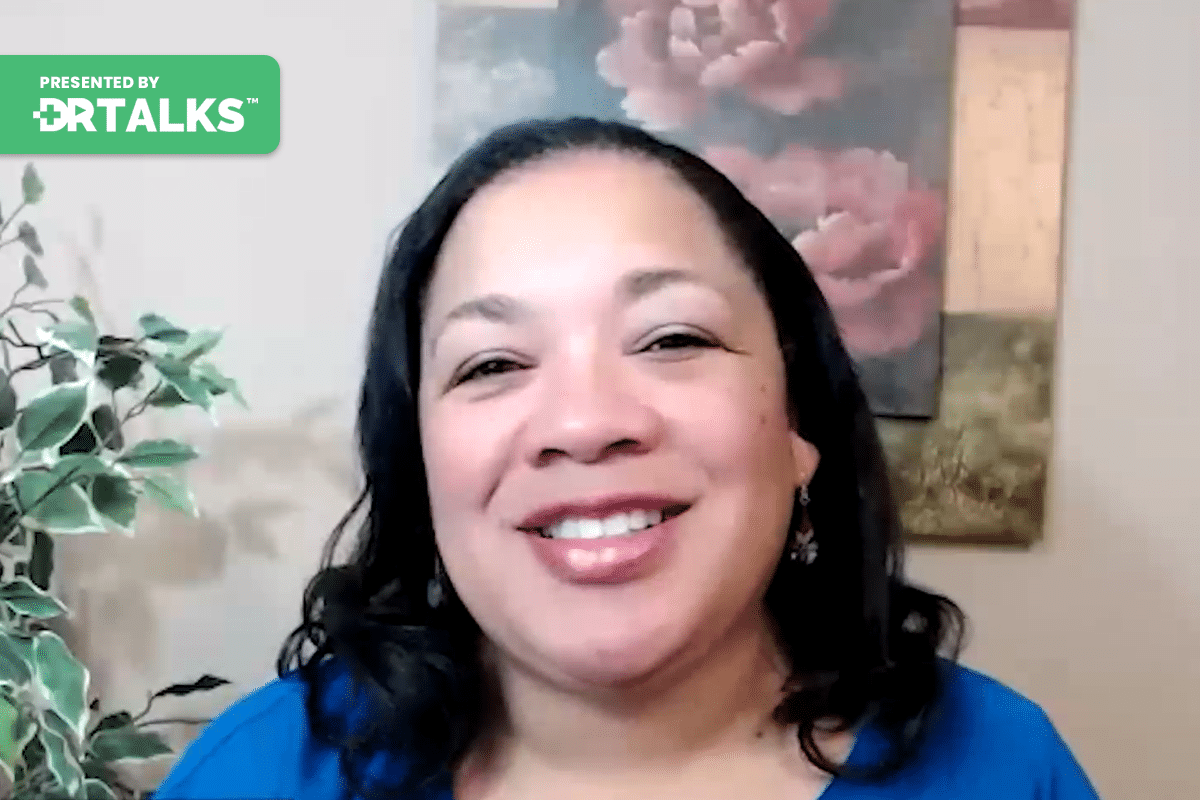Join the discussion below

Dr. Rodger Murphree is a chiropractic physician and board certified nutritional specialist. He is an internationally recognized fibromyalgia expert. His “Murphree Method,” a combination of functional and orthomolecular medicine, has helped thousands of patients get healthy and feel good again. He’s the author of 3 books for patients and doctors including... Read More

Evan Brand, CFMP, FNTP, is a Certified Functional Medicine Practitioner and Functional Nutritional Therapy Practitioner who has transformed the lives of thousands of clients with his online practice by finding and fixing the root causes of fatigue, depression, anxiety, digestive, and other issues. He solved his own health struggles using... Read More
- How do you know if you have a mold problem
- Common signs and symptoms that sometimes fall through the cracks and go unnoticed that are actually from a MOLD problem
- Steps for finding and removing mold from your home, business, and body
Related Topics
Binders, Breastmilk, Chronic Fatigue, Detox, Fibromyalgia, Inflammation, Joint Pain, Mental Illness, Mold, Mold Toxins, Multigenerational Transfer, Mycotoxins, Placenta, Testing, Toxins, Urine Panels, Water DamageRodger Murphree, DC, CNS
Hi. Welcome. I’m Dr. Rodger Murphree, and I’m your host of the Freedom from Fibromyalgia Summit. And I want to really thank you for joining us today. And I want to thank my friend colleague Evan Brand, who’s here. He’s going to be sharing some information about mold, toxins, bio toxins and neurotoxins. This is a topic that we’re starting to hear more about, but this is a topic that Evan has been talking about. He’s an expert in it a number of years. He’s been talking about the potential or effects, negative effects of mold and how it can show up in things like fibromyalgia and other illnesses that we never even were even asking. The question could be a problem. But I want to talk about that and tell you a little bit about Evan.
One thing I want to share is this Evan Brand, his podcast. I think at one time now is probably more than this. But if I remember right, you told me there was over 20 million downloads. I think it’s more than that now. But this is a show that you’ve had for over a decade, I think is what you told me. It’s a fantastic podcast. He does a wonderful job. I would encourage you to to check that out at some point. But Evan is a functional medicine practitioner. He teaches other practitioners how to set up their practice and be successful in helping complicated patients. And I’m just delighted to be able to spend some time with you and talk about the connection, Evan, between mold and fibromyalgia. Let’s talk about that.
Evan Brand, CFMP, FNTP
Yeah, well, first of all, thanks for having me. It’s awesome to get together with you. We had a lot of fun here over the last few years now with each other summits and yeah, I mean, I didn’t want to become an expert at mold. I didn’t seek that out. I didn’t say one morning, Hey, I’m going to be the mold guy, because for years I was the gut guy. You’re right. My podcast has been out since 2012 and that was primarily due to my digestive problems that I had all throughout college. I went to business school and had a lot of gut issues. Conventional medicine just could not help. They wanted to prescribe acid blockers and all sorts of different anti spasmodic medication because I had IBS and that was a generic diagnosis that now I realize has a huge connection to mold. And then I started seeing all these people with joint issues, and I had many tick bites myself from living and growing up in Kentucky. And so I discovered Lyme. I discovered Bartonella Babesia some of these tick borne or sexually transmitted infections that can cause what looks like fibro.
Rodger Murphree, DC, CNS
Yeah.
Evan Brand, CFMP, FNTP
And then all of a sudden, my wife and I built the house and we had mold exposure, and I heard all over I’d wake up stiff. It was my wrist, kind of like a carpal tunnel type feeling. And that was the shoulders and then it was the knees. And I was like, Oh my God, this is crazy. I’m stiff, I’m sore all over. So I went and did the naturopathic model, which I want to make the distinction between naturopathic medicine and functional. Functional is like, okay, let’s figure out why naturopathic medicine is like, okay, they have inflammation, they have fibromyalgia. Let’s give them Buswell here. Let’s give them ginger. Sarah Peptides, lumbar. Okay. Denise Let’s give them natural formulas that may reduce inflammation like an herbal ibuprofen. Let’s give that to them. But maybe we stop there, maybe we don’t keep digging. But it wasn’t until I got sick from mold that I started to recognize it in my clients. I know you said the same thing before we hit record as you’re seeing it a lot more now because you’re looking for it now.
And that was the same thing. I didn’t know what I didn’t know until I start running all these urine panels. And I tell you, probably eight out of every ten people that describe joint pain or if they were diagnosed fibro, they’ve got mold, toxin. And the crazy thing is this could be from many, many decades ago. So many people get frustrated because they say, well, I live in new construction now or my house has been tested and it’s clean. Like, I know I’m fine, it’s not that. And they dismiss it. But the reality is if genetically you don’t detox mycotoxins well, mycotoxins are essentially mold farts. So when you’re living, working, breathing in a water damage building, which so many of us do the majority of our day now compared to the agrarian society that we used to be when we were outside on the farm, feeding the chickens and doing the farm chores, we were outside a lot more than in modern times.
So now we have a lot more opportunity to breathe. And these toxins I just had this happen within the last two weeks. We’re in a brand new construction home and my daughter wakes me up in the middle of the night. Daddy, I hear water dripping and I go in the bathroom. Sure enough, this is on the second floor. Sure enough, there’s a puddle in the bathroom. So because we don’t have a garage or a basement, because I live south, there is a unit up in the attic for the air conditioner and there’s a dehumidifier up there too. So I pulled the step down, ran up in the attic and I look up there. Long story short, what had happened is one of the vents or the ducks that feeds the air conditioner, one of the return vents, it had been compressed. Maybe someone stepped on it during construction and there wasn’t enough airflow. So we had a massive buildup of condensation, enough to create a large puddle in the attic that then dripped down through the ceiling. So fortunately, we caught it quick and I just swabbed it and we’re testing it before we decide to cut out the drywall.
Or if we caught it quick enough, it potentially dried out within 48 hours and mold did not grow. But even a guy like me who tries to take everything to the tee in terms of perfection in the home to prevent this type of problem, it happens to me and imagine if we were out of town for a week or two or three, how much worse that could have been. And this is not a plumbing problem, see? So this is an air conditioning problem. So this stuff happens quick and easy is my point. And many of us become victims to this. Even my builder said, Oh no, we don’t need it. I told him about it. Now we don’t need to cut out the drywall. If there’s a stain on the ceiling, we’ll just paint it over. And that’s the conventional mindset towards this stuff. And the reality is the size of a postage stamp of mold can be a million or more spores. And that off gases these mycotoxins that you breathe in. So genetically as I was saying, if you don’t detox it well, you can hold on to this for generations. In fact, I’ve tested grandmother, mother, daughter, granddaughter. I’ve tested four or five different generations just to see if these families are all sick. And sure enough, we’ll find the same mycotoxins in grandma that we find in the grandbaby. And we know that mycotoxins go through the placenta.
So there is this multigenerational transfer. And this also could indicate why there could be multigenerational mental illness if the mom has anxiety or depression. We look at her mom or her grandma and we’ll often see this depression, anxiety, chronic fatigue, fibromyalgia go down through the entire generation, which is kind of bizarre to see. And we’ll see the same exact mycotoxins that have either come through the placenta, through breastmilk or through the same exposure, meaning everyone hung out at grandma house like I did when I was a kid. So is my mom getting exposed? I was the grandbaby getting exposed to then my children, my wife had mycotoxins. I tested my children. I’ve got three. They showed up with Mycotoxins even though they didn’t have their own exposure. We were out of our moldy house before our kids were born. My one daughter, my she was two at the time, but my other two kids, they were not in that house, but yet they still showed up with Mycotoxins. So I’ve seen it firsthand, this kind of placental and then breastmilk transfer. The good news is you can reverse all this.
Rodger Murphree, DC, CNS
Yeah, yeah. So as you mentioned, prior to us jumping on here and doing the recording, I was sharing with you two or three years ago, maybe it’s been a little bit longer than that. We did an interview together and we’re talking about mold. And you were sharing all these statistics that blew me away. And until then, I’d really not seen that much in my patients about mold. But I was guilty of not testing this. You know, once I started testing, there was, you know, the same thing with Lyme and some of these other things you go through, I think, as functional medicine practitioners, we have the the luxury are we have the advantage that we can hear some information, we can research it and we can put it right into our practice right away. And we can see we can see incredible benefits from doing that. We don’t have to, you know, do a double blind study and raise millions of dollars. I mean, we can take this information that we learned on a weekend seminar, put it right into practice, which is what I did after our interview.
And sure enough, it seems like everybody that I know, every patient now has some type of mold toxicity issue. All I take care of and have for the last 20 years is fibromyalgia. But it’s mind boggling to realize that 50% of the buildings here in the U.S. have had some type of water damage. People don’t realize that. And it’s people. And then you share that. People may have come in contact with mold, but they think just because they clean their house up or they moved out of the house, now they’re okay with they don’t realize they might have cleaned up the house, but they didn’t clean up themselves. They’ve got it still inside them. And this the symptoms are very similar to what we’ve seen fibromyalgia, diffuse achy pain, nerve pain, brain fog, anxiety, depression era. About 70% of people with fibro had irritable. I mean, if you look at the symptoms of mold toxicity and the symptoms of fibro, it’s like a mirror image, right?
Evan Brand, CFMP, FNTP
Yeah, it is. There’s a guy named Dr. Brewer who ran a chronic fatigue clinic for years. He found that 96% of his chronic fatigue patients had at least one micro toxin in the urine. So that’s how we do it. For folks watching, listening, it’s simple. If you have any of these symptoms that we’re talking about, mental illness, you have issues with sleep, sex, drive. There’s an energy problem. You can’t exercise. You have blood pressure problems. You have poor circulation issues. Get it done. It’s easy. You wake up, you pee in a cup. Hopefully you’ve got a practitioner like Rodger, myself, or someone that’s skilled in this. It’s done this 100 times or a thousand times. They can look at this for you and once you pee in the cup, you send it back to the lab and they measure these urinary mycotoxins and then you can find appropriate binders to treat those. And the record is about a year to fully detox someone that had a big problem, and that was a child actually had a three year old child that we saw. I ended up helping his whole family. This was a situation where the mother had been pregnant and had mold exposure during pregnancy and then they had continuous mold exposure because of a basement foundation that had busted due to tree roots busting through the foundation. And this is something that your conventional doctors never going to ask about when you go in because you have hypertension and low thyroid, they’re going to put you on a thyroid medication and a blood pressure medication. They’re not going to ask, when’s the last time your basement flooded or has your basement flooded? But and if they do, maybe they talk about bleach or some sort of conventional cleaning product. But you can make things worse. I had a just a random person messaged me on Instagram the other day.
They said, Hey, I heard your podcast about mold. And apparently they work in a warehouse where there’s a bunch of wood pallets that are in the corner of the warehouse and the wood pallets are covered in mold and they were reacting to them. So someone there decided to just pour bleach all over it and apparently that chemical concoction of mold and bleach is very toxic. And now this person feels way worse. They can’t even get close to that part of the building without having like a histamine type reaction. So hydrogen peroxide works very good, topically. So up in the attic where we have my issue or waiting on the swab test results first. But when we go back to treat the wood that’s in the attic, we’re going to take a 12% hydrogen peroxide and be careful with it and we’ll spray that on topically. And if we get any foam fires fizzing, then we know there was likely some mold growth starting to occur and that hydrogen peroxide will take care of it if there is like wet drywall, for example, that got damaged. A lot of times you just have to cut that out.
But sheetrock is cheap. It’s easy to do. You cut a section out, you put a new section there. Luckily, there was no insulation in that section, but if there was wet insulation up against the drywall, we pull that out, putting the insulation in, whether it’s fiberglass or whatever, and then you’re done and then you can move on. So people get so overwhelmed with this topic and they want to deny this topic too. I noticed clinically when I first started doing this, it was this like elephant in the room that people don’t want to discuss because it brought up all these feelings of insecurity about, Well, my house is dirty or I have to leave and where am I going to go? And real estate market is crazy and interest rates are high. So it just set off this fear response and then that was it was is pretty hard to calm down at first. And now as I get more experience with it, I’m less afraid of it. I was afraid of it myself because I thought, this is crazy, everyone’s contaminated. The clothes get contaminated also. So this is why someone moves out of mold and they stay sick. These mycotoxins can stay in the fibers of your clothing.
So if you’re out of a moldy place and you’re still having reactions, you may consider your clothing. You may need to treat that. You could either pour a little bit of hydrogen peroxide or like a baking soda mix. I also formulate an essential oil blend for laundry solution that you can use. You can try to salvage clothing, but sometimes it’s better to just start from scratch. But if you’re suffering, get the urine test done first. And then the second thing would be get the petri dishes. And I think you and have talked about those before. But just to remind people for $3 a piece, you can buy these petri dishes. You scouted them around your home for an hour. Mold falls to the ground typically. So I like this better than air samples because sometimes air samples miss things and after an hour, you put the lid on and you could pay 30 bucks to get it back to the lab, or you could just put it in a dark cupboard for a week and look at it. And if you see a bunch of stuff growing, you’ve got a problem and then you need to go from there now.
Rodger Murphree, DC, CNS
And I’m curious, do you test the home or the business first or d test the person first?
Evan Brand, CFMP, FNTP
I like to do both at the same time. If budget allows, because the problem is if you do the urine test on them and then you make a protocol form and you’re like, okay, Sally, you have this big problem. We’re going to give you these probiotics, this liver support, this binder. But yet she’s sitting in a moldy office building all day.
Rodger Murphree, DC, CNS
Now.
Evan Brand, CFMP, FNTP
I don’t want it to reflect badly on my reputation that I didn’t get her better. I don’t want her coming back to me and saying, Oh, I spent a bunch of money with this guy and he didn’t help me. Well, it’s not my fault you were in a moldy office 8 hours a day, five days a week. So I like to not only help them, but also protect my good reviews and tell people, look like I’m going to get you better if X, Y, Z, and that x, y, z is that you’re not still being exposed to think about it like a c saw. You got a big fat guy on one side, a skinny guy. The skinny guy is never going to be able to oppose him. So what I mean by that is the rate of exposure cannot exceed the rate of detox. Now, let’s just say you’re only eight. Maybe you work from home remotely, your home is clean, you’ve tested it, you’re great there. You’re home four days a week and you only go into the office one day a week and you get, I don’t know, 4 to 6 hours of exposure there.
Well, your rate of detox is probably greater than your rate of exposure, but if you’re in that moldy office five days a week, the balance is not going to work out. You’re not going to get well. And one of the things that we look for is on the organic acids test, we can measure the metabolites of mold to figure out whether you’re colonized and whether you’re growing it. Because some people are not colonized, they’re just a mold reservoir and some are more of a mold factory where they’re growing it. And if they’re growing it, conventional medical doctors that treat mold would use antifungals like itraconazole. That is an option. But my bias is natural and I have many, many case studies to prove that this works. We use herbal antifungals up the nose and in the gut, and we kill that colonized patient.
So you can measure this stuff. That’s the great thing about it, because you’re not dependent just upon the client or the patient’s symptoms. If they feel stuck, you can identify why they feel stuck looking at their urine. And in most cases, six, nine, 12 months later we retest. And sometimes I’d say the majority actually the levels go up before they go down. So on paper you’ll see this huge spike, but then they feel better and they’re like, Oh my God, what’s happening now? I need to sell my house. Or What do I do in The answer’s generally no, it’s just that they’re getting better at excreting it. So it’s almost like you were so clogged up. And now we bust the damn open with glutathione and liver support and fossil title choline. And some of these nutrients help mobilize the mycotoxins to where now we’re seeing the true story. Whereas the first test might have just been the tip of the iceberg.
Rodger Murphree, DC, CNS
Yeah. So you mentioned the organic acid test, I assume from Great Plains. There’s other people that have that as well. But yeah, these are the micro matrix, the Michael tox tests from them as well. So there is a cool couple now.
Evan Brand, CFMP, FNTP
Yeah, the miko is what I like from Great Plains. I actually I literally just got back my I just got back my swab test just now. My staff just sent it to me so I can see if the screen shares allowed. I’ll pull this up and show this to people. This is pretty cool. It looks like I’m good to go.
Rodger Murphree, DC, CNS
Yeah.
Evan Brand, CFMP, FNTP
Well, it says host disabled. And I know by default the screen shows off. But what I’m looking at on my side is just a report and it just says total count in a not applicable. So I did three swabs. I swab my desk just for fun because this is a wood desk that I’m working on. And I swabbed the attic where I told you the water had spilled. And then I also swabbed the bathroom ceiling. And it looks like we caught it early because it’s showing here there’s zero count. So nothing showed up with the swab test. So you can do the plates, but you can also swab a particular surface if you’re like, Oh, that looks weird in my bathroom or something, you can take these little it’s almost like a sterile Q-Tip basically with this little laboratory vial that you shove it in to make sure there’s no outside contamination. So that’s what I did. I swabbed it, put it back in this little vial, then got it back to the lab and they’re showing nothing. So this makes me feel good. It sounds like I might have got away without having to do a bunch of cutting.
Rodger Murphree, DC, CNS
Which is good as well. That’s a question that. Do you think that most people who have been exposed to mold, mold, they have to they have to remediate. They have to clean everything in their house. They have to move out while this is being done. I mean, do you think that that is a a necessity that they have to do it amass?
Evan Brand, CFMP, FNTP
Well, you’re saying if we find current exposure.
Rodger Murphree, DC, CNS
Yeah, yeah. If we know there’s mold in the house or the business. Yeah. So you do the testing.
Evan Brand, CFMP, FNTP
Generally it’s best to get out of there for a little while. Yeah. I mean my wife and I, we had a C, we had hard to keep up the way. Tom’s last. So we had one, we had one of our daughters. When we got out of our place, we stayed in a hotel. We ended up staying in the hotel for like six weeks. Now, hotels are notoriously moldy too, because think about it, you’ve got multiple floors, two, three or four floors, and those bathrooms could overflow. You know, Johnny’s drunk on the third floor and overflows his bathtub and that drips down through the other floor. So it was really hard for us to find a mold free hotel. Generally, you want to look for something less than two years old. So if we’re ever traveling and we’re trying to be careful that way, or if you were like taking a sabbatical out of your house or your office to find a new place to work or live, you know, I would just Google new hotels in your area and try to find something within a year or two because things happen quick. I mean, this house that we’re in now is less than a year old.
And we already had that problem, which could have been huge if we were out of town that flood. You know, that I mean, it was a large puddle. I mean, enough to soak like two bathroom towels, like full size bathroom towels. It was a lot of water. So luckily we caught it quick. But new doesn’t always mean moldy, but new is generally much, much safer. And so, yes, I would say temporarily it’d be good to get out of there. And we also call this kind of like a mold sabbatical in the sense that it allows your immune system to reset because the problem is your immune system is trying to send this signal. So what’ll happen is your amygdala is kind of the fear. I call it the fear Rolodex, meaning it’s constantly screening and searching your environment for things to be afraid of or things not to be afraid of. So naturally, when you’re in the woods and you know, there’s bear in that area, you’re a little more on edge. You’re like, okay, there could be a bear here. So your amygdala is like keeping you a little bit in fight or flight. Like it’s engaging that sympathetic nervous system just in case a bear pops around the corner. You might need to run, but everything might be okay. And mold does the same thing to your immune system. It will actually stimulate that part of the brain, that sympathetic system, and you’re a little bit on edge.
But the problem is you start to overreact to everything or you simply become numb. It’s almost like ding dong ditch, where if a kid keeps ringing the doorbell, eventually you’re not going to go to the front door to check because, you know, it’s just that kid messing with you. Same thing with the mold. So what happened for me is when we got out of the mold and this also happened, you know, several times for me, but when we got away from it, we’d come back into that environment. And then we had a better sense and feeling of what was safe and what was not safe. So we would go, Oh, when I sit on that couch, I feel pretty tired and almost kind of dizzy. That’s not a good sign. Where I had this favorite sweater was like a $100 wool sweater. I love that. I didn’t want to get rid of it, but I mean, every time I put it on, I got a headache and I thought, okay, am I just crazy or is this thing contaminated? And so we tried to do my laundry solution. We salvaged some of our soft materials and then others we just had to toss. But I wouldn’t know what was safe and what wasn’t. If I was still in that environment.
So just to I’m going to say in a different way, just so it’s clear, sometimes you need to fully get away from your stuff to then come back and revisit your stuff or if someone’s moving and you’re concerned about what may be contaminated, it’s best to leave everything in like a Tupperware container in the garage. Or if you have a garage or storage, leave it in there and then slowly reintroduce those items into your home. Now, this conversation is a little more geeky than what most people need to hear, but there’s some very sensitive people out there listening. This will make sense to where you need to move one item in at a time like this. Dresser Bring it in. I feel fine. This couch, I move it in. Oh, I got a headache and my eyebrows flaring up. Okay, well, that couch might need to go back outside. Oh, I feel better now that the couch is out. So this sounds a little tedious, and it can be, but this is a level of detail that it takes for the most sensitive people. Luckily, the vast majority of people are not that sensitive. And if we simply use antihistamine, mass cell stabilizing nutrients like Quercetin, vitamin C, we use some diamond oxidase for mealtime histamine if we can stabilize their immune system. Usually people are not that sensitive and we can reintroduce everything and they’re fine, you know.
Rodger Murphree, DC, CNS
So with fibromyalgia, they already have this over zealous, sympathetic nervous system. It’s really kind of taking control. It has shut down the parasympathetic, which is very calming and they’re kind of hyper alert anyway. And this is just one trigger of many triggers. And we see with fibromyalgia, you know, fibromyalgia is just a name given to describe these group of symptoms that people have in common. But there’s triggers that come along that start to generate these symptoms. And I think mold is one along with some others. But the thing about mold I think is so intimidating. You kind of mentioned it. People hear about mold and they have a lot of misconceptions about it, number one. Number one, they think, well, I don’t smell it, I don’t see it. I probably don’t have an issue with it. Number two, they think was is just mold. I mean, they think they think like the in your shower, the mildew is. No, we’re not talking about mildew. We’re talking about a very toxic lot alive, something that’s alive that can get inside you and create a lot of symptoms. It’s very much real.
But the other thing I think is so intimidating is they they hear about they have to move out and they have to throw away everything and they have to pull up other carpets and and read, you know, put their hardwood floors. And while there is some truth to that, you know, you can deny that put your head in the sand, but you’re going to miss the opportunity to finally figure out probably a big piece of the puzzle is keeping you sick. So, you know, I think it’s important that we be candid about it. It’s not an easy thing to get rid of. I mean, it’s not you said you said a year. And I think, you know, depending on the case, you know, easily six months. I had a patient here recently that was diagnosed with fibromyalgia. And, you know, 5 minutes in the conversation, I knew she had fibromyalgia. But what I learned was that a few years ago, she had this incredible toxic home that she was living in and that was damaged with mold. And that’s really what it turned out to be. Now, knock on wood, it took six months when we got her, got all that mold out of her, tested, retested and retested. And she’s doing great. But sometimes you get a diagnosis, whether it’s fibromyalgia in Ms. or whatever it is, you don’t realize that it’s this underlying mold issue that’s driving so much of what’s going on and this going wrong in your body.
Evan Brand, CFMP, FNTP
Well, mycotoxins are highly carcinogenic to so some people they end up with a cancer diagnosis. And that’s very unfortunate because once again, you’re oncologist, even the best oncologist at prestigious hospitals. Let me tell you, they’re not asking about mold exposure, but it’s in the literature. We know that specific mycotoxins affect certain parts of the brain, deliver the kidneys in the adrenals. And there’s Dale Bredesen, an M.D., now talking about he’s actually doing some talks with me at Great Plains, talking about Alzheimer’s and dementia as a mold being a huge contributing factor to these neurodegenerative diseases now. And so if you tell people in the moment when they’re 40, 50, 60, and they feel pretty bad, but yet they don’t have a cancer diagnosis or they haven’t had some major Alzheimer’s diagnosis, it’s easier for them to brush it off. But I encourage those people don’t wait until you get that severe diagnosis, like, hey, you’ve got liver cancer, you’ve got six months to live before you start to address this stuff because people have to be miserable enough to listen.
And that’s the problem I’ve learned clinically is that if someone’s miserable but they’re not miserable enough, they won’t listen. And a lot of times this gets into marriage issues because the husband doesn’t believe the wife and the husband doesn’t want to spend the money. He thinks this is B.S. Who’s this random doctor on the Internet talking about mold? He doesn’t know. It’s fine. I’ll just paint it over, and I’ll. I’ll fix it myself. And they don’t ever want to get outside advice. So we’re hitting on a lot of sensitive topics for people because like I said, this could change your marriages, could change your finances, this could change where you live. Yeah, but it all works. Well, my grandmother, her mother, so is my great grandmother. She always told me that as a kid, like any time I was ever stressed or worried, she just said it’ll all work out. And in the heat of the moment, that’s really hard to believe because you feel so uprooted. You feel so vulnerable to have this exposure. And just to be clear, you mention this a little bit, but this is typically not something that you see or smell. Yeah. So Aspergillus, for example, is a very, very light color. So if you have like light wood cabinets on the inside of your cabinets where you put your wet dishes, your wet plates, your, you know, you take it out of the dishwasher, but there’s still a little moisture on those cups and glasses.
And you put that in those cabinets, only the trained. I would even be able to identify that. That’s mold. I didn’t know at first. And then when I had the guy over at my house, he was like, That’s Aspergillus right there. He said, You must have been putting plates back in your cabinets that were not fully dry. And I said, Well, yeah, it’s, you know, I didn’t think it was a big deal, but when he pointed out to me, I go, Oh my God, that’s mold now, because your average person thinks it’s something ugly. And no, our house was beautiful. They look pristine to the naked eye. But the trained eye goes, No, wait a sec. You see that light colored coat dust growing there where you put your wet plates? No, that’s. That’s Aspergillus. My oh, my God. Okay, so that’s how easy it is to to miss this stuff. And people think that I’m calling them dirty. If I tell them their house is moldy, your house could be clean to your eyes, but still be moldy if it’s in your ductwork or if it’s in your blower for your air conditioning or your furnace unit. So this stuff, it doesn’t mean you’re dirty and you’re not a bad person. This happens to the best of us. I’ve seen multimillion dollar homes that are moldy as hell, and I’ve seen trailer homes that are clean as a whistle. So this mold does not discriminate based on income, wealth, status, nothing.
Rodger Murphree, DC, CNS
Yeah. So Richie Shoemaker, who kind of put the mold on the map years ago, Doctor Richie Shoemaker in his book, Mold Survivors. I think it’s been a while since I read that. But one of the things he has in and a few times he says that fibromyalgia what about a bunch of you know crack a B.S. that there’s no such thing as fibromyalgia. All it is is mold toxins. Now I don’t I’m not there yet. Okay. But I have come to the realization that mold is definitely playing a role. And a lot of the fibromyalgia patients that I see and it only makes sense because it’s something that’s routinely missed. No one really talks about it. So it’s a piece of the puzzle that never gets put, you know, never helps to complete the puzzle.
Evan Brand, CFMP, FNTP
Yeah, well, let me let me let me help you with the puzzle, too. Something I figured out, because this is something that Richie probably misses. Or maybe he doesn’t go into as deep as he should. And this is just, once again, me coming from being the gut guy, the guy who worked on bacterial overgrowth, what could be called Cibo Candida parasites, worms, gut inflammation. So here’s the picture. The puzzle that I’ve arranged in my head now that I try to implement clinically, which is that because I know you and I, we talked extensively about serotonin when you came on my podcast, we talked about five HTP and how much incredible success you’ve had modulating neurotransmitters over the years, which I think is incredible. So here’s the smoking gun or kind of the order of operations, I believe that happens is well, it could happen both ways, but so let’s play it out. So it could be like antibiotics, killing. Let’s say you went in for a dental procedure, right? Dental cleaning, antibiotics that knocks down beneficial microbes. So now pathogenic bacteria like strep staph, klebsiella, pseudomonas, morgan all of these pathogens start to grow.
These are called this biotic bacteria. They make toxins or secrete toxins. They may actually rob your nutrients and create nutrient deficiencies. Then you develop neurotransmitter imbalances because you’re not making as much serotonin in your gut like you should by depending on what paper you read, it’s somewhere in the 90% of serotonin is made in the gut. Right. So that it this dysbiosis is not allowing that proper production of serotonin. And without that proper serotonin, now you have the irritability, you have the insomnia, you have the fibro type symptoms. So it could also be mold, too. So at the start of this cascade of problems, it could be even. Great Plains has told us now that that mold actually promotes opportunistic overgrowth like specifically clostridia bacteria as well as Candida. So this mold exposure from your moldy office or your moldy house weakens the immune system, allows the opportunistic bacterial overgrowth to thrive, which then creates those nutrient deficiencies, which then leads into those neurotransmitter deficiencies, which then leads into your symptoms. And most people just treat the symptoms. It’s like, okay, you have anxiety, here’s GABA, you have depression, you know, here’s tyrosine.
But if you work all the way back up that chain from the symptom up to the neurotransmitter or nutrient issues to the dysbiosis, some people stop there and I stop there for years, meaning I would give herbs to address these gut infections and people would feel amazing. And then 2 to 3 months later, they’d come back and say, Guess what? My guts messed up again. Back to diarrhea, bloating, coated tongue sugar cravings, alcohol cravings, whatever. Okay, fine. Let’s rotate herbs and kill those bugs again. Let’s knock them down. And then they kept coming back and I was beat my head against the wall until I got sick from mold. And then I realized, Holy crap, all these people with these dysbiosis problems that also have fibro or anxiety or depression or chronic fatigue. I wasn’t going upstream. I was missing one step, which is to get up to the mole. Okay, so now we fix the mold as we’re working on the gut. The gut is now staying well, the brain is then staying well, the nutrient levels are now staying well and the symptoms are at bay. So to me, that’s kind of the connection between all of it.
Rodger Murphree, DC, CNS
Well, and we don’t have time to go into all the detail about it. So appreciate you bringing that up because you can look at physiologically, biochemically what happens when you get exposed to bio toxins. It’s these small toxins. And you’re absolutely right. It sabotages your neurotransmitters. It depletes your melatonin. You can’t make melatonin. So now you start having insomnia problems in your sleep, which generates inflammation, generates anxiety, depression, creates adrenal fatigue. I mean, everything we see in fibro can definitely be coming from mold. It’s just one more trigger that can set everything off. And it helps to explain. I think people go through life and they’re doing well. Then all of a sudden, you know, they just start having all these symptoms that show up that they’d never had before. Food allergies, seasonal allergies, chemical sensitivities, things that never would have bother them. They just there’s a straw that breaks the camel’s back. They get under stress or whatever it is. They’ve been exposed to this mold or heavy metals or yeast overgrowth or whatever it is. They can’t handle it. And now the symptoms start to show up.
Evan Brand, CFMP, FNTP
I overheard a conversation. We went to a little kid’s birthday party over the weekend. I heard some parents. I just bite my tongue because for years, anytime I hear something wrong with somebody, my gut is to, like, run over there and just, like, you know, word vomit and tell them everything that’s wrong with them. But it was a mother talking to another mother about how her kids just had to get back on allergy medication. And I’m thinking, okay, why, though? Why does a kid need allergy medication? What is wrong with his mast cells? Why is he producing so much histamine? Is it the diet? Is it the gut? Is it the school? Is it more like what is it in this kid? Because that’s not natural. Our ancestors wouldn’t have had outdoor allergies. We lived outdoors. How would we have survived if our allergies were that bad, pre pharmaceutical? How would we have made it? And really when the bucket is full of these toxins and the bacterial overgrowth, those bacteria in your gut also produce histamine.
So the bacterial overgrowth and the mold, those overflow your histamine bucket, combine that with a diet that’s high in histamine and then you have cold allergies. But really, it’s just a it’s an effect. The allergies are the effect. So if you have allergies, you need to look at, okay, what is triggering that? What’s the clue that’s driving this? It’s not just any more Zyrtec or whatever other medication. And on the note of the dopamine thing, if you put this in pop med, you can read about it. Just type in okra toxin. It’s like ozone HRA toxin, okra, toxin, dopamine. And it’s now been identified that okra toxin damages the part of the brain that makes dopamine. So that’s crazy because now we’re saying this mold toxin is literally affecting the dopamine making factory, the part of the brain that makes dopamine. So if you wake up and you have no motivation, no drive, you get easily bored, you can’t stay focused. You just feel like a loser because you can’t get yourself together. This is not your fault. So people get down about themselves. And I was researching this just this morning to make sure I was accurate and still saying it because I said it for eight or ten years now. But depression is still the number one leading cause of disability in the United States.
Rodger Murphree, DC, CNS
Wow.
Evan Brand, CFMP, FNTP
And depression is something I dealt with enough talk with for a decade. And there’s a root to that. And I can’t blame it all on mold because that’s certainly not it. But it’s a huge piece now that we know this okra toxin dopamine connection. And okra toxin is the mold fart. The off gassing of aspergillus and aspergillus is the most common mold that grows in a water damaged building. So aspergillosis the mold, it can’t bite or hurt other molds like actively. So it just kind of farts out this airborne mycotoxins to basically kill other molds. And then you’re the innocent bystander that’s breathing this toxin in, and then it’s getting stored in the fat cells and in the brain. And so if you are mentally ill, test your urine, figure this out on paper, get an organic acid test if you have to beg your practitioner to do this, though they’re the wrong practitioner. Reach out to someone like Rodger or myself so we can help you. Because so many clients come to me and there’s another doctor on the top of the lab, and I’m like, Well, why aren’t you working with, you know, Doctor So-and-so? They’re on this lab. Well, because I had to ask them to run the lab, and they reluctantly did it. But they don’t know what to do with the results. It’s like, Well, don’t even waste your time. Then just come to somebody who’s done this enough to be able to help you. And you don’t need pharmaceuticals to fix this. Some of the conventional mold experts are going to tell you to run the shoemaker protocol where you have to do colostomy, which is a prescription binder, which I tried for a couple of months, but the downside is.
Rodger Murphree, DC, CNS
It’s.
Evan Brand, CFMP, FNTP
Tough on the gut, man.
Rodger Murphree, DC, CNS
And it is bad.
Evan Brand, CFMP, FNTP
Yeah, I think I developed histamine issues after taking colostomy and it was so hard on my gut. And also there’s some damage to the mitochondria too, so my fatigue got way worse after taking colostomy. It did help pull the micro toxins out, but man, it’s rough so you can do this in a more gentle way.
Rodger Murphree, DC, CNS
Yeah, well, Evan is always. I wish we had another hour, because there’s. There’s things I want to ask you, and but we don’t. So I want to thank you so much, and I want to encourage everybody to check out Evan’s website. Evan Brand dot com, correct? Evan Brand icon Yes, sir. Oh, there. And there’s all sorts of wonderful resources. I want to encourage you to check out his The Evan Brand Show for sure. Make sure you’re tuning in to that podcast. As you listen to a couple of podcasts, you’ll be hooked. So, Evan, thanks so much. I really appreciate you sharing your knowledge and expertize. It’s been a pleasure to hang out with you today.
Evan Brand, CFMP, FNTP
Oh, my pleasure, too. And just keep going, people. You can’t give up. What’s the alternative? What do you got to lose?
Rodger Murphree, DC, CNS
Yeah.
Evan Brand, CFMP, FNTP
Sometimes you have nothing left to lose. And that may be the best place to be, because that encourages you to get motivated. And if your family thinks you’re crazy, if your friends think you’re crazy, your spouse thinks they’re crazy, you’re crazy. Also, maybe you are. We’re a little crazy. That’s okay. But you’re not making up these symptoms. Someone’s not going to lie. Someone’s not going to fake depression. They’re not going to fake fibromyalgia. So I believe you and practitioners like us, we believe you. And I hope that’s enough to keep you going.
Rodger Murphree, DC, CNS
And hope is the greatest gift you could give somebody. So thank you so much for sharing that. Thanks again, Evan. So, so delighted to spend this time with you.
Evan Brand, CFMP, FNTP
Yeah, my pleasure.
Downloads










